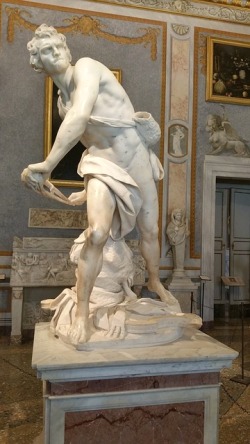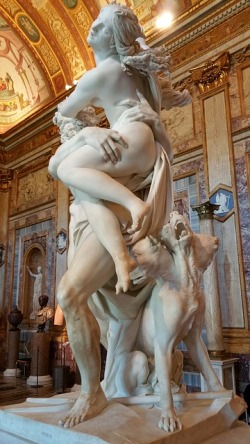Hidden Gems of Rome – The Borghese Gallery

It is understandable that visitors to Italy are drawn to larger museums – such as the Vatican Museums, the Ufizzi Gallery and the Capitoline Museums, but this understated gallery is one of the best and should be on everyone’s “to see” list!

When travelers to Rome ask members of the Illume team, “what might you suggest I see during free time,” one of the first sites that comes to mind is the Borghese Gallery. The Borghese Gallery is set in the beautiful urban park, the Borghese Gardens. In the 17th century, the great families of Rome, including the Borghese, created large villas on the outskirts of the city. These included vineyards, artificial lakes, and woods. As the city grew in the 1900s, many of these noble villas were surrounded by new urban development and now form city parks. Today the Borghese Gardens are a popular place for a refreshing afternoon stroll and include the zoo, riding path for horses, majestic trees, and several museums housed in 17th and 18th century villas.
In the 17th century, Cardinal Scipione, nephew of Pope Paul V (of the Borghese family) whose name is inscribed on the façade of St. Peter’s Basilica, began collecting art. His collection included great ancient sculptures and mosaics, Renaissance paintings, and paintings and sculptures by 17th century artists such as Caravaggio and Bernini. The collection was originally housed in a building near St. Peter’s and later transferred to the Villa Borghese. The villa was renovated in the 18th century with neo-classical decorations and restored at the end of the 20th century.
The main floor of the gallery showcases a breathtaking collection of sculpture including impressive ancient pieces, a great floor mosaic of battling gladiators from the 4th century, and a series of Bernini sculptures. Bernini’s masterpieces include David, Apollo and Daphne, the Rape of Proserpina and Aeneas Carrying Anchises. Bernini’s artistic genius left an indelible mark on Rome – including the colonnade surrounding St. Peter’s Square, the beautiful fountain of the Four Rivers in Piazza Navona, the Baldachino inside St. Peter’s, the Chair of Peter altarpiece in the apse of St. Peter’s, the Ecstasy of St. Teresa of Avila, and countless other sculptures and architectural elements in churches and monuments of Rome. The Borghese Gallery showcases Bernini’s genius and skill in the realistic movement of bodily form (David, Apollo, and Pluto), the translucent thin pieces of marble (Daphne’s fingers turning into laurel leaves), and dramatic moments caught in stone.


The painting gallery includes masterpieces of Caravaggio, Raphael, Titian, and others. The Caravaggio paintings are of particular note – Madonna dei Palafrenieri, Boy with Basket of Fruit, Ailing Bacchus, St. Jerome, St. John the Baptist and David Showing Goliath’s Head. Caravaggio is noted for his use of ordinary street people as models for religious figures and the striking way he uses light and dark to focus attention on gestures and elements of his compositions.
The gallery is modest in size and doesn’t require a great investment of time, but it is one of the most visually stimulating museums of the world. 18th century renovations and decorations help the masterpieces stand out and invite visitors to linger in the sensual surroundings. It is understandable that visitors to Italy are drawn to larger museums – such as the Vatican Museums, the Ufizzi Gallery and the Capitoline Museums, but this understated gallery is one of the best and should be on everyone’s “to see” list!
Visits to the Borghese Gallery are often included in customized Illume group programs or can be facilitated by Illume tour managers as optional visits.
Entrances are timed (every 2 hours) and must be reserved in advance. The Gallery is open Tuesday through Sunday.
